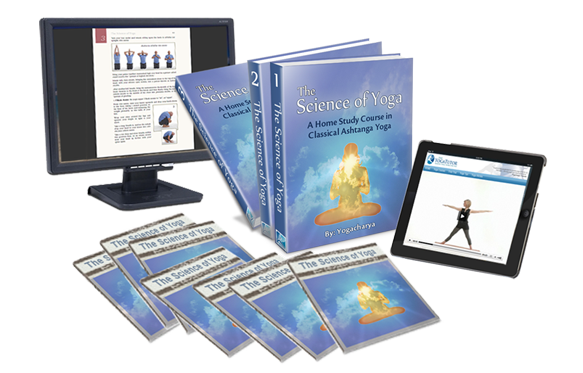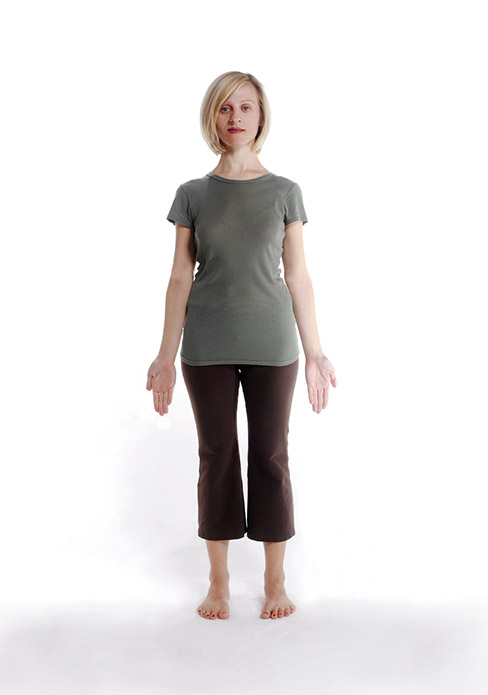[ Excerpt from The Science of Yoga, page 71 ]
All manner of standing can be observed in those around us. We often (unconsciously) stand in ways that lend subtle or even great mechanical strain to the physical structures of their body. Over time, this can lead to physical deformities and hamper spinal elasticity.
When standing, it is important that the weight be equally distributed throughout the foot; the ball and toes, heel, inner and outer arches. The big toes and heels should be kept in a line parallel to the midline of the body. This allows for a relaxed or neutral pelvic position (with a slightly forward pelvic tilt), pulling in the abdomen and moving the chest slightly forward.
All this brings the body into perfect balance overtop of the anatomical centre of gravity, which lies approximately 2 inches anterior to the second sacral spine segment, inside the pelvis, and allows for a relaxed standing position in which the whole body is in balance along the frontal plane.
In this relaxed position, the force of gravity is minimized, which otherwise puts excess stress and demands upon our muscles leading to physical and mental fatigue.
A perfectly balanced position demands the least amount of muscular effort to maintain. It is therefore essential to master the art of standing correctly.
In Sanskrit, the term sama means "same" or "equal." Sthiti refers to a "condition or state of steadiness." So sama sthiti asana is the “equally steady pose," or the "pose of equal balance." Sama sthiti asana then, is an important tool at the beginning of our standing asana practices for developing awareness of balance and body tension.
Technique
- Stand with the legs slightly apart, just far enough that they are not in contact with each other. The feet will be a few inches apart - nearly together, but not touching.
- Likewise, stand with the spine erect, the neck and head in-line with the spine and the gaze directly forward.
- Let the arms relax without effort along side of the body with the palms open and facing forward.
Note: This should be a standing position where the least amount of muscle effort is required and all unnecessary tension throughout the body let go of.
[Continued...]
---------------------
NOTE: This yoga article is an excerpt from The Science of Yoga, an online yoga training program with streaming yoga videos and 600 pages of step-by-step yoga instruction.

"The Science of Yoga is a course worthy of
leather binding and an honored place in the
finest libraries in the world
... It is indeed a masterful work."
Dr. John Michael Christian
AwakeningWithYoga.com
Learn More About
The Science of Yoga Course
|







